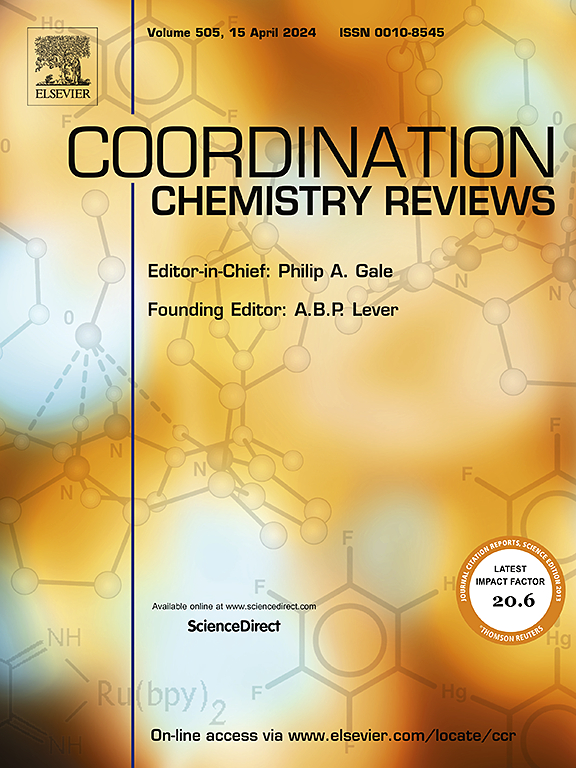洞察碳点和传统半导体混合:光催化制氢的潮流引领者
IF 20.3
1区 化学
Q1 CHEMISTRY, INORGANIC & NUCLEAR
引用次数: 0
摘要
能源的可持续转换和储存将在未来创造需求。利用传统半导体材料构建复合材料以克服其共同的挑战,目前正在进行大量的研究,以通过光催化过程增强水分解性能。与其寻找新的、有效的制氢光催化材料,不如对现有的低成本半导体光催化剂进行改性。cd (Carbon dots)是材料研究领域的一颗耀眼的明星;由于具有无限的激发特性,它们被广泛应用于光催化领域,以扩大传统光催化材料的效率和稳定性。相当多的研究报告支持现有的cd,大大提高了光催化分解水的性能。利用CDs对传统半导体基光催化剂进行改性,提高光催化水裂解生成氢的能力,在光催化研究领域报道较少。本文综述了CDs的多种作用,以及它如何有效地改进了传统光催化材料的光催化水分解。本文章由计算机程序翻译,如有差异,请以英文原文为准。


Insights into carbon dots and conventional semiconductors hybrids: A trendsetter in photocatalytic hydrogen generation
Sustainable conversion and storage of energy will create demand in the future. There is ample research on constructing composites with conventional semiconductor materials to overcome their common challenges, which are currently in progress to empower the water-splitting performance by the photocatalysis process. It is better to modify the existing low-cost semiconductor photocatalyst instead of finding a newer, effective photocatalytic material for hydrogen production. CDs (Carbon dots) are shining stars in material research; because of their unlimited exciting properties, they were engrossed in the photocatalysis area to expand the efficiency and stability of conventional photocatalytic material. Quite a lot of research reports support existing CDs that grandly improve the photocatalytic water-splitting character. Modifying conventional semiconductor-based photocatalysts with CDs to improve the photocatalytic water splitting to generate hydrogen was less reported in the photocatalytic research area. The present summarised research report involves a broad view of the multiple roles of CDs and how it effectively improves the conventional photocatalytic material towards photocatalytic water splitting.
求助全文
通过发布文献求助,成功后即可免费获取论文全文。
去求助
来源期刊

Coordination Chemistry Reviews
化学-无机化学与核化学
CiteScore
34.30
自引率
5.30%
发文量
457
审稿时长
54 days
期刊介绍:
Coordination Chemistry Reviews offers rapid publication of review articles on current and significant topics in coordination chemistry, encompassing organometallic, supramolecular, theoretical, and bioinorganic chemistry. It also covers catalysis, materials chemistry, and metal-organic frameworks from a coordination chemistry perspective. Reviews summarize recent developments or discuss specific techniques, welcoming contributions from both established and emerging researchers.
The journal releases special issues on timely subjects, including those featuring contributions from specific regions or conferences. Occasional full-length book articles are also featured. Additionally, special volumes cover annual reviews of main group chemistry, transition metal group chemistry, and organometallic chemistry. These comprehensive reviews are vital resources for those engaged in coordination chemistry, further establishing Coordination Chemistry Reviews as a hub for insightful surveys in inorganic and physical inorganic chemistry.
 求助内容:
求助内容: 应助结果提醒方式:
应助结果提醒方式:


